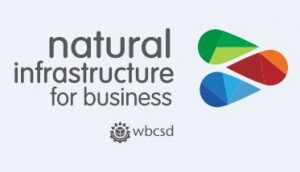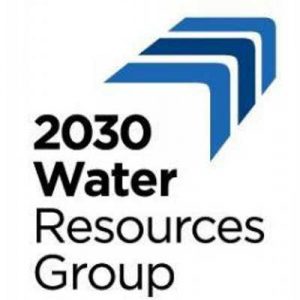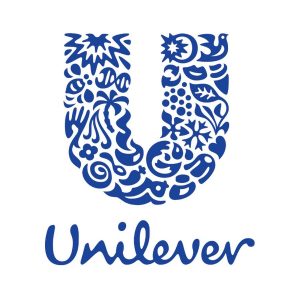Overview
The Tata water mission (TWM), as it is called, is engineered to improve access to safe water and to sanitation, and to make a difference through rigorous and technologically advanced interventions. It includes a focus on integrating water and sanitation with livelihood schemes and women’s empowerment and partnering with government agencies and other charitable foundations. The mission is backed by Tata Trusts, and companies including Tata Steel, Tata Motors, Tata Power and Tata Chemicals.
Launched in June 2014, the water mission has a strategy planned out for the 2015-20 period. There’s a budget of 750 million rupees for this, but that’s only 30 percent of the total pie, which has been pegged at 2.25 rupees billion, or 60 percent. The remaining 10 percent will be the community’s contribution.
Key aspects of the Tata Water Mission are:
Improving water quality through affordable technology interventions at the community and household levels. The Trusts are in partnership with globally renowned research institutions, supporting work that aims to create practical and scalable products and system solutions.
Ensuring access to water and promoting conservation for improving delivery at household level, whilst promoting community institutions for ensuring sustainability of systems.
Promoting improved sanitation and hygiene practices through behavioral change.
Tata Trusts has, on the water mission, inked partnerships with various state governments for financing the projects.
Country(ies) where the intervention is taking place
India. Programmes are spread over Gujarat, Andhra Pradesh, Telangana, Karnataka, Jharkhand, Odisha, Uttarakhand, Rajasthan and Nagaland.
Lead Organization
Tata Trusts.
Who is involved?
Implementation Partners: TATA Power, TATA Chemicals, TATA Projects, Jaldhaara Foundation and Water Health.
Knowledge partners: Wateraid, World Waternet, the University of New South Wales (UNSW) Australia, The Indian Institute of Technology-Mumbai (IIT Bombay), the Massachusetts Institute of Technology (MIT).
Resource Partners: Bill and Melinda Gates Foundation, The World Bank, WSP – Water and Sanitation Program, the Conrad N. Hilton Foundation, the One Drop Foundation and Arghyam.
Objectives
The Tata Water Mission’s objective is to create a healthy future for India’s rural communities through access to safe, assured and adequate drinking water, and to improved sanitation.
Its target is to reach, over the next three years, 7,000 villages across India and 6 million people.
The three key components of the mission’s programmes are: water quality, water access and conservation, and sanitation and hygiene.
The mission has forged collaborations to gain technology knowhow, to build resource partnerships with governments and other donors, and to implement its programmes.
Target markets
Rural communities.
Workplace Setting
Communities.
Which elements of WASH are covered?
Water, sanitation, hygiene; sanitation and hygiene practices through behavioral change.
Which elements of the Framework for Business Action on WASH are covered?
Taking action.
Methodology and tools that have been developed or are planned
Developing region-specific Behaviour Change Communication (BCC) campaigns, and awareness generation interventions, to ensure sustainability of interventions.
Four stage approach:
Mobilize community
Identify relevant solutions
Implement solutions
Build sustainability
Government partners and/or the local policy environment
Signing Memorandum of Understanding with several state governments to ensure scalability of interventions – whilst the State provides around 70% of the physical infrastructure costs, the Trusts’ resources are utilized towards innovation, critical gap funding and developing innovative approaches.
Tata Trusts has, on the water mission, inked partnerships with various state governments for financing the projects. The financing the projects comes from 3 sources: 30 percent coming from the Trusts, 60 percent from the state governments and other donors, and the rest from the community. Once Tata Trusts signs the agreements with the states, they go down to the job of convincing the community to pitch in with its 10 percent. This method is being used and scaled up across locations.
Outcomes, successes and ongoing challenges
From 2014 to 2017 Tata Water Mission has covered 44 districts, 3,500 villages and 750,000 beneficiaries. The Water Mission has completed 1,150 water supply schemes and 75,000 toilets.
Interventions for providing safe drinking water and sanitation initiated across 3,500 villages in Gujarat, Uttarakhand, Rajasthan, Jharkhand, Nagaland, Mizoram, Andhra Pradesh, Karnataka and Odisha.
Sanitation/individual household toilets setup for more than 30,000 households (200,000 individuals).
The deeper the connection with the communities it seeks to bring into its social uplift ambit, the greater has been the impact. In Gujarat the mission has unfolded in 400 villages over the last two years, reaching some 100,000 households and about 600,000 people. The numbers may not be as impressive in Uttarakhand, but there is no doubting the change ushered in by the water and sanitation mission in the state.
Across India, the mission has reached 1,500 villages, in excess of 200,000 families and 1 million people.
Building partnerships with like-minded organizations, foundations and universities to bring in global knowledge and practices that can be adapted to Indian conditions. Key amongst these are with:
- Arghyam (one of the pioneering Indian foundations working in ground water management and sanitation) for supporting water, sanitation and hygiene (WASH) projects across common geographies.
- Parekh Foundation to co-fund an integrated WASH project in Uttarakhand covering 312 villages.
- One Drop Foundation, Canada, to jointly initiate a project in South Rajasthan covering 250 villages.
- Bill and Melinda Gates Foundation to develop innovative models for sanitation in Gujarat and Jharkhand.
- WaterNet International, Netherlands, for synergising efforts to combat salinity ingress in coastal areas of Gujarat, and focusing on village level waste water management.
- Jaldhaara Foundation, for a tie-up to help manage the water crisis in underserved areas with the set-up of 65 Water and Health centres in Karnataka (including in Bengaluru) as also in New Delhi, providing safe drinking water in quality affected areas.
Future Plans
Continue scaling up interventions for providing basic services related to water and sanitation to most vulnerable communities of the society, in a sustainable manner.
Given the devastating effects of climate change, promoting conservation of water resources.
Establishing a platform for innovators and social entrepreneurs to ideate new and affordable technologies in areas of solid and liquid waste management, water resource management, and menstrual hygiene management, to meet the need and demand of communities.
Developing mass awareness campaigns across the country for ensuring Behaviour Change, through forging partnerships with like-minded players.
Links to learn more
https://www.tatatrusts.org/upload/pdf/srtt-annual-report-2015-16.pdf
https://www.tatatrusts.org/our-work/water-sanitation-and-hygiene





